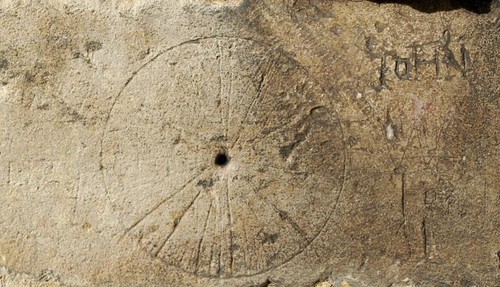ALL SAINTS. Norman nave, as proved by one N window with Roman brick surround. Early C14 chancel. The renewed windows are shafted inside and have hood-moulds with head-stops. Head-stops also above the Piscina. The C14 W tower with set-back buttresses was repaired and partly rebuilt in brick in 1586. - FONT. Mid C13, and the best of the date in Essex, especially the E side with big, lush stiff leaf scrolls. Two large rosettes each on the other sides. - SCREEN. Tall, with one-light divisions with cusped arches. Dado with various blank tracery motifs. - PANELLING. Early C17, in the chancel. - PAINTINGS. Moses and Aaron, probably late C17. - PLATE. Large Cup of 1658; Paten on foot, perhaps also 1658. - BRASS to Thomas Coggeshall d. 1421; in armour.
SPRINGFIELD. It almost belongs to Chelmsford, but has proud memories of its own. Here walked Oliver Goldsmith, and here we think of one who played his part and gave his life in a deed that will ring through history. It was in a white cottage facing the church that Oliver Goldsmith wrote much of The Deserted Village. He can hardly have been thinking of cheerful Springfield as he wrote of his Sweet Auburn, but we may be sure he knew the sights of this village church, for it was ancient in his day. He would see nearly everything as we see it, the Norman nave with its Roman bricks, the 14th century chancel and vestry, the unusual tracery of the 14th century windows, the Tudor door with its ornamental ironwork. The tower is partly 600 years old; but the parapet, turret, and buttresses are modern. On a doorway to the chancel are three sundials. There is a traceried screen of the 15th century, much restored; a coffin lid 600 years old; a brass portrait of a man in the armour worn at Agincourt; a Tudor funeral helm; and a big 17th century painting of Moses with a censer. The font is one of the best 12th century fonts in Essex, with big flowers and foliage on the bowl and waterlilies below. In the tower are several old gravestones, one of Sir Thomas Stampe who was Lord Mayor of London and died in Queen Anne’s time; another with a famous name, an unknown Joseph Chamberlaine of 1692. There is old glass from the 14th century to the 17th, including shields and parts of figures, one a man with a purse and another probably St John drinking from a cup. Panels of Flemish glass show the Descent from the Cross and the Entombment.
But the thing that stirs us most within these walls is a flag of our own day. It flew at Zeebrugge. It was the White Ensign flown on the North Star in one of the most heroic and terrible exploits in the story of the Navy, and it is treasured in this chancel because Lieutenant Charles Paynter, who fell in that great hour, was the vicar’s son, only 23 when he died. Moving it is to think that the flag he fought under has come home to the place where his father prayed for him in the darkest hours of the Great War.
Flickr.
But the thing that stirs us most within these walls is a flag of our own day. It flew at Zeebrugge. It was the White Ensign flown on the North Star in one of the most heroic and terrible exploits in the story of the Navy, and it is treasured in this chancel because Lieutenant Charles Paynter, who fell in that great hour, was the vicar’s son, only 23 when he died. Moving it is to think that the flag he fought under has come home to the place where his father prayed for him in the darkest hours of the Great War.
Flickr.


No comments:
Post a Comment